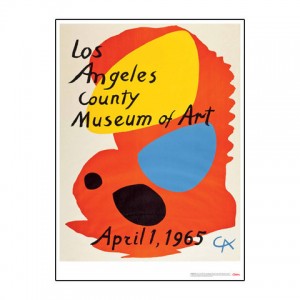Calder and Abstraction: From Avant-Garde to Iconic
Resnick Pavilion
November 24, 2013–July 27, 2014

One month left to see this elegantly installed show of Modernist masterworks by Alexander Calder.
It was Marcel Duchamp who coined the term “mobile” to describe Calder’s early subtly kinetic sculptures in the early 1930s. While there may be a lingering air of childhood school projects when one thinks of mobiles, stepping into the Calder exhibition at Lacma’s Resnick Pavillion clears the mind of any such associations.
Unlike, say, the Calder-inspired work of Jean Tinguely, Calder’s mobiles don’t move very much, only slight fluctuations of gravity and breeze edge their shapes along their axis.






